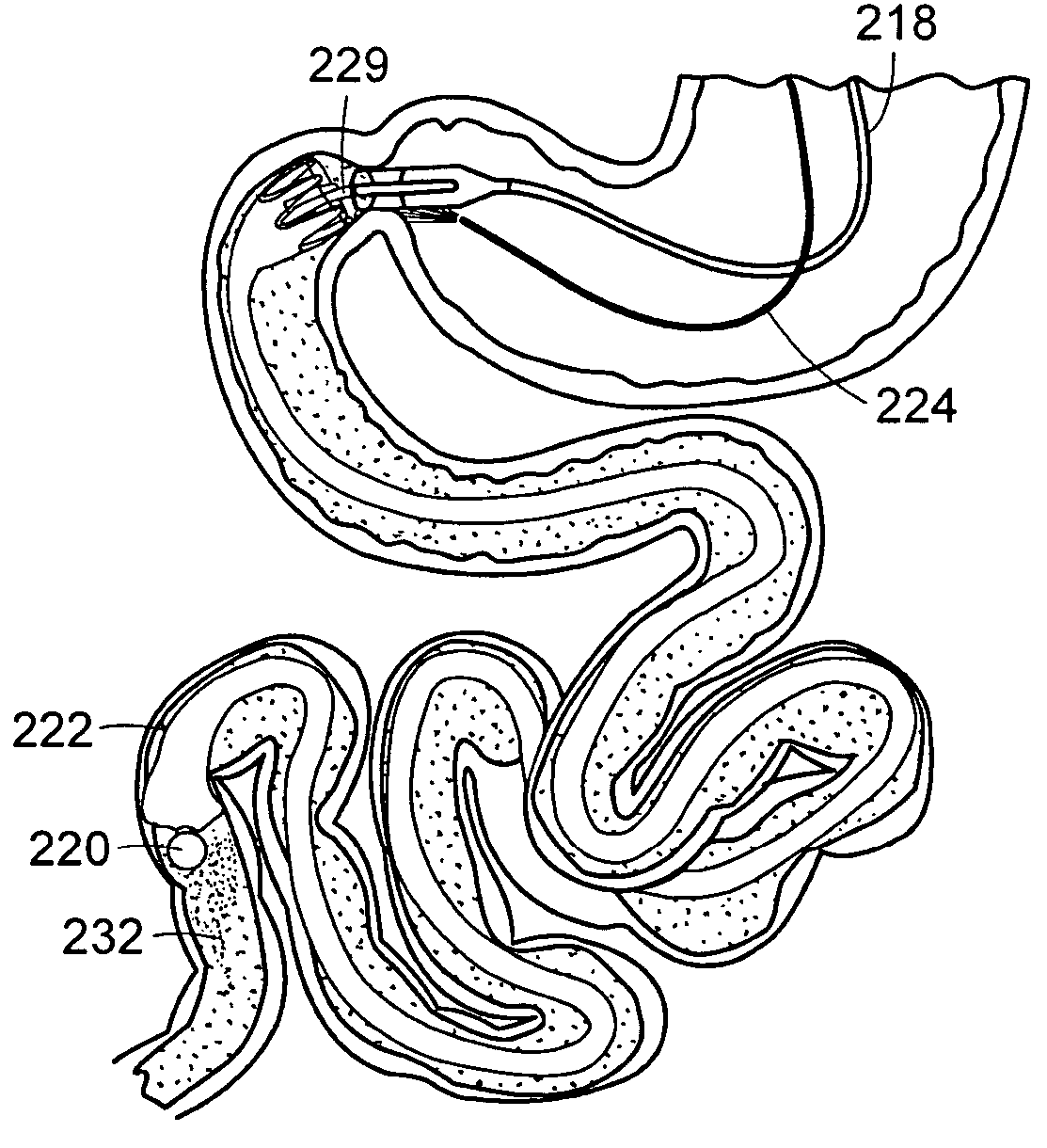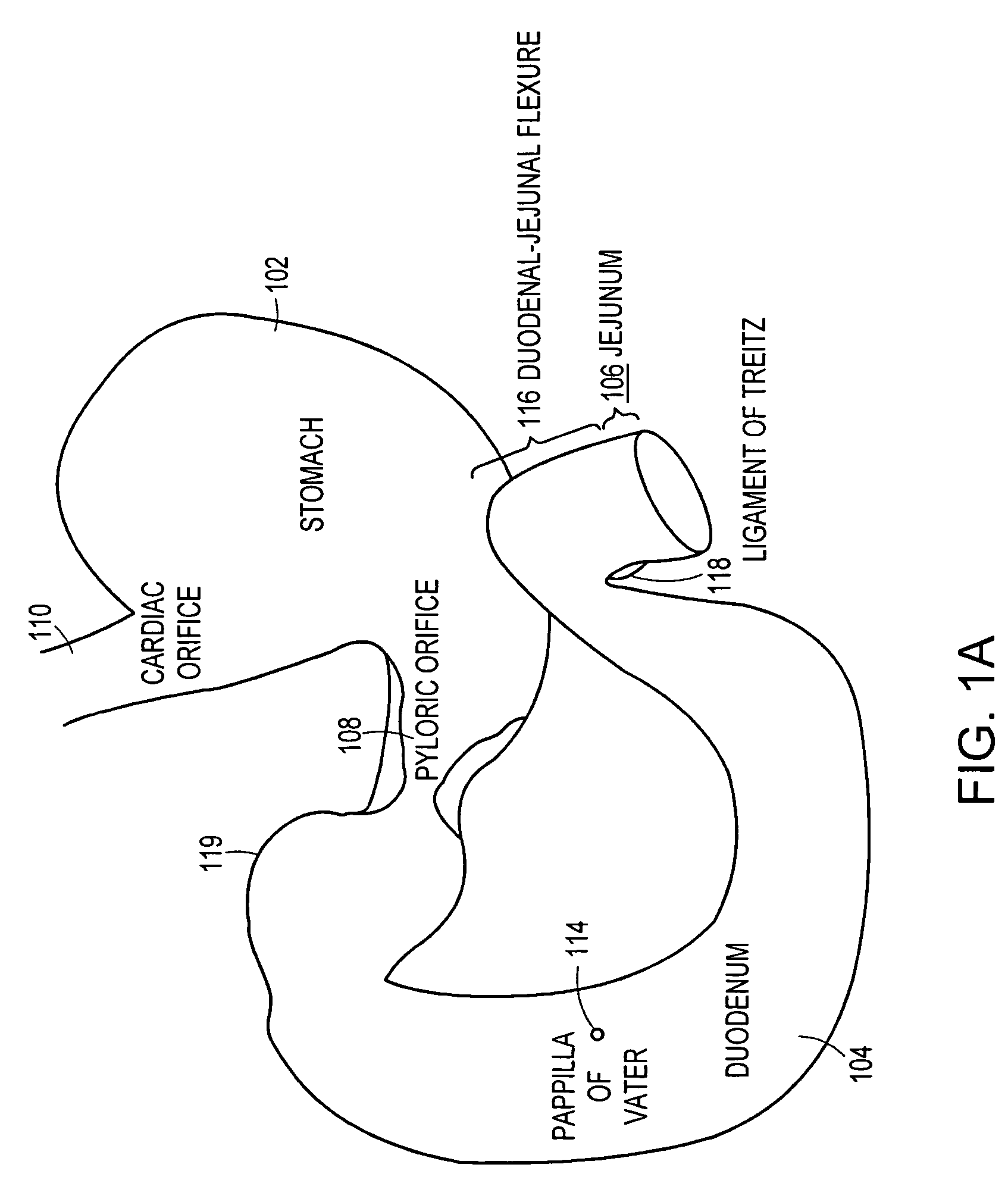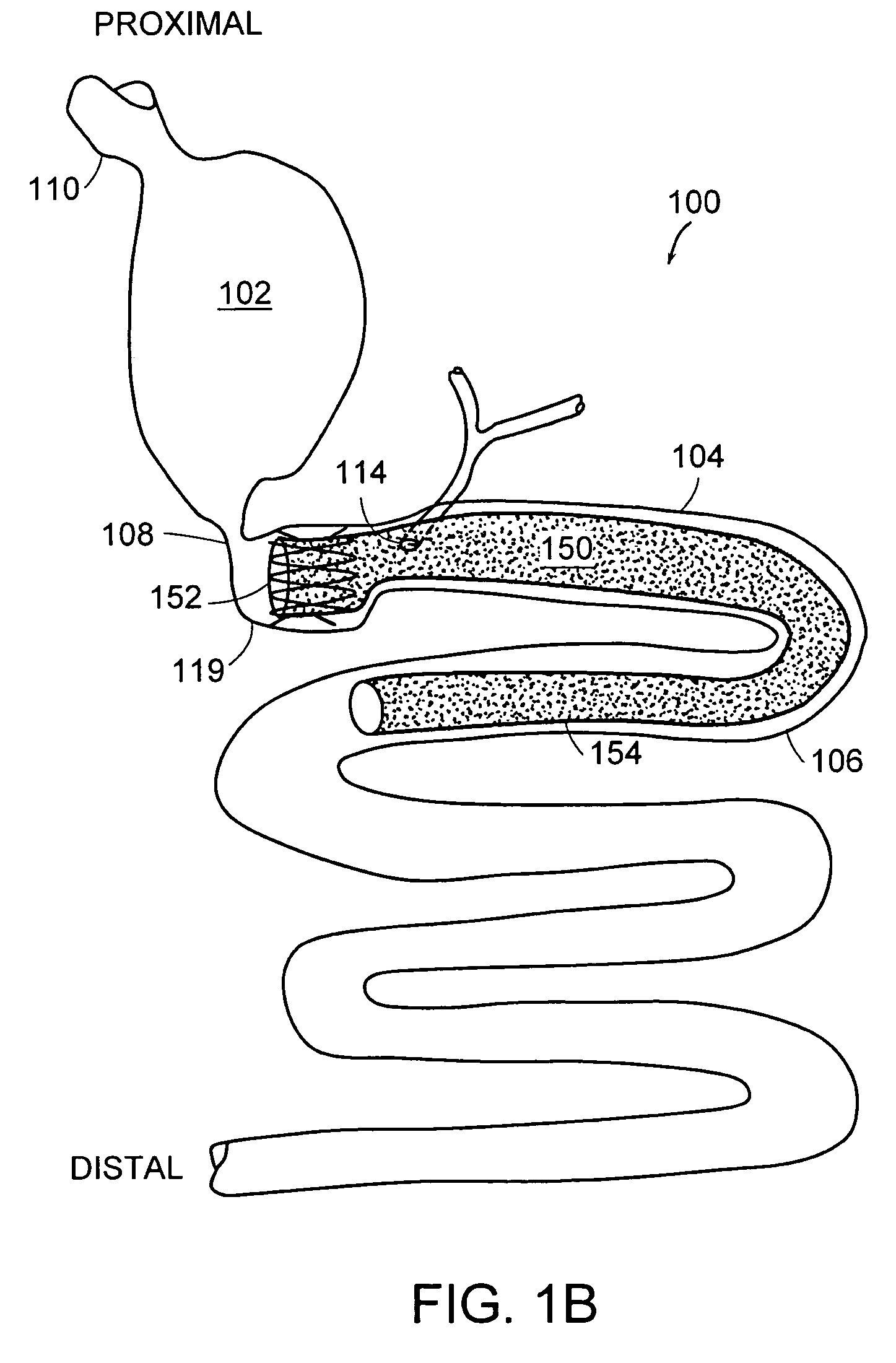Methods and devices for placing a gastrointestinal sleeve
a technology of gastrointestinal sleeve and sleeve, which is applied in the field of methods and devices for placing gastrointestinal sleeve, can solve the problems of increasing the prevalence of obesity, putting enormous strain on the body of people carrying excess weight, and overwhelming health problems
- Summary
- Abstract
- Description
- Claims
- Application Information
AI Technical Summary
Benefits of technology
Problems solved by technology
Method used
Image
Examples
Embodiment Construction
[0032]A description of preferred embodiments of the invention follows. While this invention has been particularly shown and described with references to preferred embodiments thereof, it will be understood by those skilled in the art that various changes in form and details may be made therein without departing from the scope of the invention encompassed by the appended claims.
[0033]This invention features devices and methods for implanting or placing gastrointestinal implant devices (e.g., intestinal sleeves) into mammals (e.g., a human). Several gastrointestinal implant devices (e.g., intestinal sleeves) have been developed and are suitable for implementation or placement within a gastrointestinal tract using the methods and devices of this invention. Some examples of such devices are described in U.S. patent application Ser. No. 10 / 339,786, filed Jan. 9, 2003, and entitled “Bariatric Sleeve;” U.S. patent application Ser. No. 10 / 726,011, filed Dec. 2, 2003, and entitled “Anti-Obes...
PUM
 Login to View More
Login to View More Abstract
Description
Claims
Application Information
 Login to View More
Login to View More - R&D
- Intellectual Property
- Life Sciences
- Materials
- Tech Scout
- Unparalleled Data Quality
- Higher Quality Content
- 60% Fewer Hallucinations
Browse by: Latest US Patents, China's latest patents, Technical Efficacy Thesaurus, Application Domain, Technology Topic, Popular Technical Reports.
© 2025 PatSnap. All rights reserved.Legal|Privacy policy|Modern Slavery Act Transparency Statement|Sitemap|About US| Contact US: help@patsnap.com



